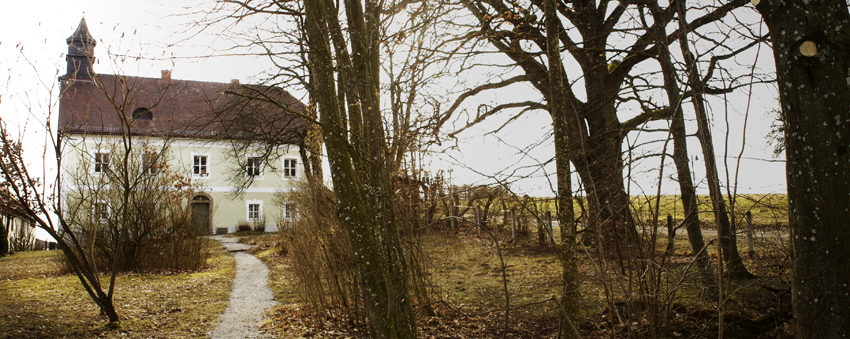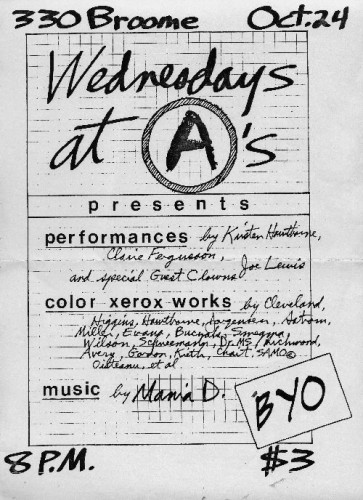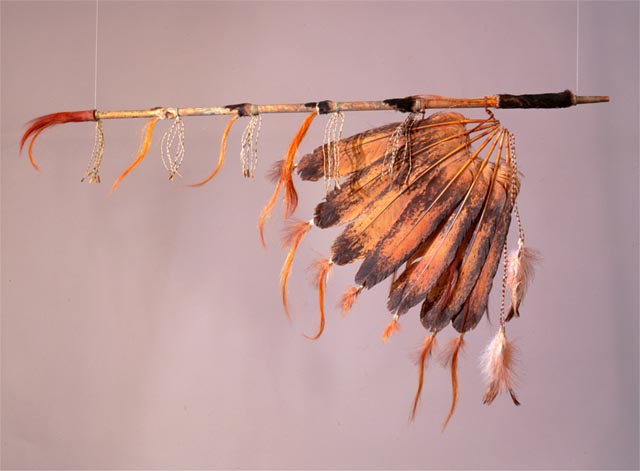|
Musée-Galerie De La Seita
The Musée-Galerie de la Seita was a museum of tobacco-related objects located in the 7th arrondissement of Paris at 12, rue Surcouf, Paris, France. It opened in 1979 and closed in June 2000. , '' Stratégies'', May 5, 2000 The museum opened in 1979 on the site where Gros Caillou tobaccos were once manufactured. It displays collections acquired from 1937 onwards by the Societe Nationale d'Exploitation Industrielle des Tabacs et Allumettes (), the former state-owned manufacturer of French tobacco products including |
Tobacco
Tobacco is the common name of several plants in the genus '' Nicotiana'' of the family Solanaceae, and the general term for any product prepared from the cured leaves of these plants. More than 70 species of tobacco are known, but the chief commercial crop is ''N. tabacum''. The more potent variant ''N. rustica'' is also used in some countries. Dried tobacco leaves are mainly used for smoking in cigarettes and cigars, as well as pipes and shishas. They can also be consumed as snuff, chewing tobacco, dipping tobacco, and snus. Tobacco contains the highly addictive stimulant alkaloid nicotine as well as harmala alkaloids. Tobacco use is a cause or risk factor for many deadly diseases, especially those affecting the heart, liver, and lungs, as well as many cancers. In 2008, the World Health Organization named tobacco use as the world's single greatest preventable cause of death. Etymology The English word ''tobacco'' originates from the Spanish word "tabaco ... [...More Info...] [...Related Items...] OR: [Wikipedia] [Google] [Baidu] |
Musée De L'Homme
The Musée de l'Homme ( French, "Museum of Mankind" or "Museum of Humanity") is an anthropology museum in Paris, France. It was established in 1937 by Paul Rivet for the 1937 ''Exposition Internationale des Arts et Techniques dans la Vie Moderne''. It is the descendant of the Musée d'Ethnographie du Trocadéro, founded in 1878. The Musée de l'Homme is a research center under the authority of various ministries, and it groups several entities from the CNRS. The Musée de l'Homme is one of the seven departments of the Muséum national d'histoire naturelle. The Musée de l'Homme occupies most of the Passy wing of the Palais de Chaillot in the 16th arrondissement. The vast majority of its collection was transferred to the Quai Branly museum. History Earlier Collections The Musée de l'Homme has inherited items from historical collections created as early as the 16th century, from cabinets of curiosities, and the Royal Cabinet. These collections were enriched during the 19th cent ... [...More Info...] [...Related Items...] OR: [Wikipedia] [Google] [Baidu] |
Defunct Museums In Paris
{{Disambiguation ...
Defunct (no longer in use or active) may refer to: * ''Defunct'' (video game), 2014 * Zombie process or defunct process, in Unix-like operating systems See also * * :Former entities * End-of-life product * Obsolescence Obsolescence is the state of being which occurs when an object, service, or practice is no longer maintained or required even though it may still be in good working order. It usually happens when something that is more efficient or less risky r ... [...More Info...] [...Related Items...] OR: [Wikipedia] [Google] [Baidu] |
List Of Museums In Paris
There are around 130 museums in Paris, France, within city limits. This list also includes suburban museums within the "Grand Paris" area, such as the Air and Space Museum. The sixteen :fr: Musées de la Ville de Paris, museums of the City of Paris are annotated with "VP", as well as six other ones also accommodated in municipal premises and the :fr:Musée de France, Musées de France (fr) listed by the ministry of culture are annotated with "MF". List Paris Grand Paris Rest of Île de France Defunct museums Paris Paris région * Château de By, Musée Rosa Bonheur, premises mostly sold by the city in 2014 * Musée d’art naïf de Vicq en Île-de-France, closed in 2014 See also * Visitor attractions in Paris, List of visitor attractions in Paris * List of museums in France {{DEFAULTSORT:Museums In Paris Museums in Paris, * Lists of museums by city, Paris Paris-related lists Lists of museums in France, Paris ... [...More Info...] [...Related Items...] OR: [Wikipedia] [Google] [Baidu] |
Musée Du Fumeur
The Musée du Fumeur (Smoking Museum) is a private museum of smoking located in the 11th arrondissement of Paris at 7 rue Pache, Paris, France. It is open daily except Monday; an admission fee is charged. The nearest métro station is Voltaire. The museum is located within a storefront, and contains a collection of smoking objects including European pipes, 17th century clay pipes, Native American ceremonial pipes, hookahs, Chinese opium pipes, Egyptian sheeshas, and snuffboxes, as well as cigars, tobacco samples, hemp-fiber clothing, and etchings, portraits, photographs, videos, and scientific drawings of tobacco plants. See also * Musée-Galerie de la Seita * List of museums in Paris There are around 130 museums in Paris, France, within city limits. This list also includes suburban museums within the "Grand Paris" area, such as the Air and Space Museum. The sixteen :fr: Musées de la Ville de Paris, museums of the City of Pari ... References Musée du FumeurDepartures: Pa ... [...More Info...] [...Related Items...] OR: [Wikipedia] [Google] [Baidu] |
Marianne Von Werefkin
Marianne von Werefkin, born Marianna Vladimirovna Veryovkina ( rus, Мариа́нна Влади́мировна Верёвкина, Marianna Vladimirovna Veryovkina, mərʲɪˈanːə vlɐˈdʲimʲɪrəvnə vʲɪˈrʲɵfkʲɪnə; – 6 February 1938), was a Russian painter, who made outstanding achievements for German expressionism. Life and career In Russia 1860–1896 Werefkin was born to Elizabeth née Daragan (1834–1885) and Vladimir Nikolayevich Veryovkin (1821–1896), commander of the Yekaterinburg Regiment in Tula, the capital of the Tula Governorate. Her father was of Russian nobility whose ancestors came from Moscow. He made a career in the Imperial Russian Army, becoming a general and finally commander of the Peter and Paul Fortress in Saint Petersburg. Her mother belonged to an old family of Cossack princes, whose father, Lieutenant general Peter Mikhailovich Daragan (1800–1875), was the governor of Tula from 1850 to 1866, the official palace is where her ... [...More Info...] [...Related Items...] OR: [Wikipedia] [Google] [Baidu] |
Alfred Kubin
Alfred Leopold Isidor Kubin (10 April 1877 – 20 August 1959) was an Austrian printmaker, illustrator, and occasional writer. Kubin is considered an important representative of Symbolism (arts), Symbolism and Expressionism. Biography Kubin was born in Kingdom of Bohemia, Bohemia in the town of Leitmeritz, Austro-Hungarian Empire (now Litoměřice). From 1892 to 1896, he was apprenticed to the Landscape photography, landscape photographer Alois Beer, although he learned little. In 1896, he attempted suicide on his mother's grave, and his short stint in the Austrian army the following year ended with a nervous breakdown. In 1898, Kubin began a period of artistic study at a private academy run by the painter Ludwig Schmitt-Reutte, before enrolling at the Academy of Fine Arts Munich, Munich Academy in 1899, without finishing his studies there. In Munich, Kubin discovered the works of Odilon Redon, Edvard Munch, James Ensor, Henry de Groux, and Félicien Rops. He was profoundly affe ... [...More Info...] [...Related Items...] OR: [Wikipedia] [Google] [Baidu] |
Alexej Von Jawlensky
Alexej Georgewitsch von Jawlensky (russian: Алексе́й Гео́ргиевич Явле́нский, translit=Alekséy Geórgiyevich Yavlénskiy) (13 March 1864 – 15 March 1941), surname also spelt as Yavlensky, was a Russian expressionist painter active in Germany. He was a key member of the New Munich Artist's Association ( Neue Künstlervereinigung München), Der Blaue Reiter (The Blue Rider) group and later the Die Blaue Vier (The Blue Four). Life and work Alexej von Jawlensky was born in Torzhok, a town in Tver Governorate, Russia, as the fifth child of Georgi von Jawlensky and his wife Alexandra (née Medwedewa). At the age of ten he moved with his family to Moscow. After a few years of military training, he became interested in painting, visiting the Moscow World Exposition c. 1880. Thanks to his good social connections, he managed to get himself posted to St. Petersburg and, from 1889 to 1896, studied at the art academy there, while also discharging his military ... [...More Info...] [...Related Items...] OR: [Wikipedia] [Google] [Baidu] |
Otto Dix
Wilhelm Heinrich Otto Dix (; 2 December 1891 – 25 July 1969) was a German painter and printmaker, noted for his ruthless and harshly realistic depictions of German society during the Weimar Republic and the brutality of war. Along with George Grosz and Max Beckmann, he is widely considered one of the most important artists of the ''Neue Sachlichkeit''. Biography Early life and education Otto Dix was born in Untermhaus, Germany, now a part of the city of Gera, Thuringia. The eldest son of Franz Dix, an iron foundry worker, and Louise, a seamstress who had written poetry in her youth, he was exposed to art from an early age.Karcher 1988, pp. 21–24. The hours he spent in the studio of his cousin, Fritz Amann, who was a painter, were decisive in forming young Otto's ambition to be an artist; he received additional encouragement from his primary school teacher. Between 1906 and 1910, he served an apprenticeship with painter Carl Senff, and began painting his first landscapes. I ... [...More Info...] [...Related Items...] OR: [Wikipedia] [Google] [Baidu] |
Jean-Michel Basquiat
Jean-Michel Basquiat (; December 22, 1960 – August 12, 1988) was an American artist who rose to success during the 1980s as part of the Neo-expressionism movement. Basquiat first achieved fame as part of the graffiti duo SAMO, alongside Al Diaz, writing enigmatic epigrams in the cultural hotbed of Manhattan's Lower East Side during the late 1970s, where rap, punk, and street art coalesced into early hip-hop music culture. By the early 1980s, his paintings were being exhibited in galleries and museums internationally. At 21, Basquiat became the youngest artist to ever take part in '' documenta'' in Kassel. At 22, he was one of the youngest to exhibit at the Whitney Biennial in New York. The Whitney Museum of American Art held a retrospective of his artwork in 1992. Basquiat's art focused on dichotomies such as wealth versus poverty, integration versus segregation, and inner versus outer experience. He appropriated poetry, drawing, and painting, and married text and image ... [...More Info...] [...Related Items...] OR: [Wikipedia] [Google] [Baidu] |
Pre-Columbian
In the history of the Americas, the pre-Columbian era spans from the original settlement of North and South America in the Upper Paleolithic period through European colonization, which began with Christopher Columbus's voyage of 1492. Usually, the era covers the history of Indigenous cultures until significant influence by Europeans. This may have occurred decades or even centuries after Columbus for certain cultures. Many pre-Columbian civilizations were marked by permanent settlements, cities, agriculture, civic and monumental architecture, major earthworks, and complex societal hierarchies. Some of these civilizations had long faded by the time of the first permanent European colonies (c. late 16th–early 17th centuries), and are known only through archaeological investigations and oral history. Other civilizations were contemporary with the colonial period and were described in European historical accounts of the time. A few, such as the Maya civilization, had their own wri ... [...More Info...] [...Related Items...] OR: [Wikipedia] [Google] [Baidu] |
Ceremonial Pipe
A ceremonial pipe is a particular type of smoking pipe, used by a number of cultures of the indigenous peoples of the Americas in their sacred ceremonies. Traditionally they are used to offer prayers in a religious ceremony, to make a ceremonial commitment, or to seal a covenant or treaty. The pipe ceremony may be a component of a larger ceremony, or held as a sacred ceremony in and of itself. Indigenous peoples of the Americas who use ceremonial pipes have names for them in each culture's Indigenous language. Not all cultures have pipe traditions, and there is no single word for all ceremonial pipes across the hundreds of diverse Native American languages. Use in ceremonies Although often called "peace pipes" by Europeans (and, specifically, ''calumet de paix'', by the French), the smoking of a ceremonial pipe to seal a peace treaty is only one use of a ceremonial smoking pipe, by only some of the nations that utilize them. Various types of ceremonial pipes have been used by di ... [...More Info...] [...Related Items...] OR: [Wikipedia] [Google] [Baidu] |








